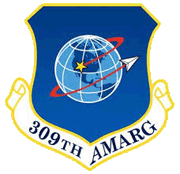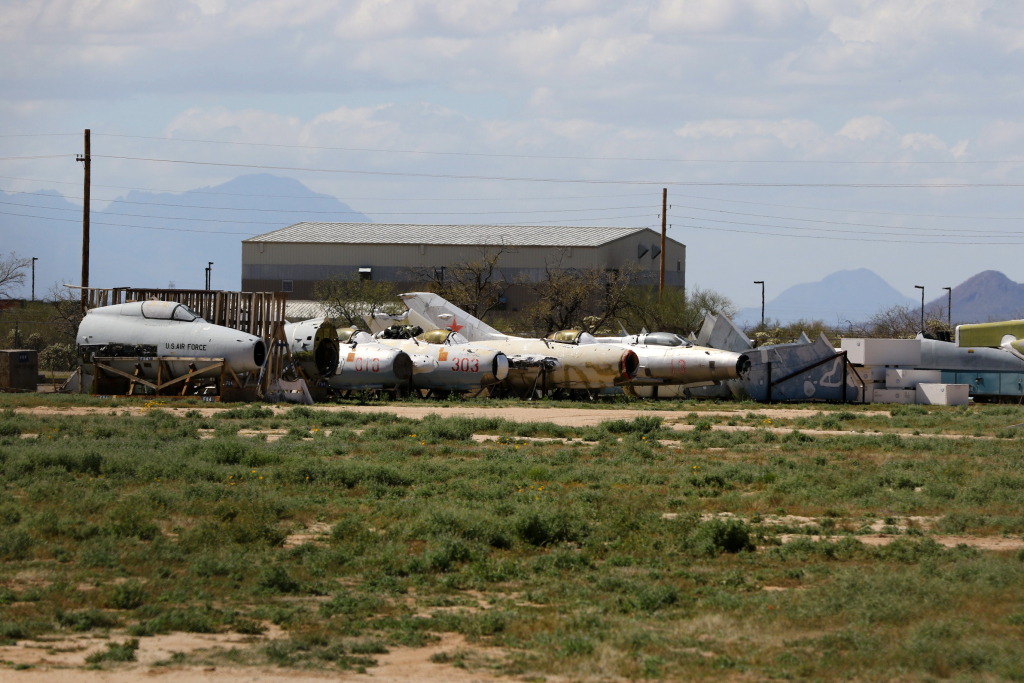|
A look at AMARG 2015
Karo-Aviation visit Davis Monthan airbase
Article and pictures by Ronald de Roij
The 309th Aerospace
Maintenance and Regeneration Group is a one-of-a-kind specialized
facility within the Air Force Materiel Command structure. 309 AMARG
provides aerospace maintenance and regeneration capabilities for US and
Allied/Coalition forces in support of a wide range of military
operations.
Immediately after World War II, the Army's San Antonio Air Technical
Service Command established a storage facility for B-29 and C-47
aircraft at Davis-Monthan AFB. Today, this facility is the 309th
Aerospace Maintenance and Regeneration Group , which has grown to
include more than 4,400 aircraft and 13 aerospace vehicles from the Air
Force, Navy-Marine Corps, Army, Coast Guard, and several federal
agencies including NASA.
Davis-Monthan Air Force Base was chosen because of Tucson's low
humidity, infrequent rainfall, alkaline soil and high altitude reducing
rust and corrosion. The hard soil makes it possible to move aircraft
around without having to pave the storage areas

|
A other B-52 ,number 61-007, was pulled from the from
this area at the "Boneyard," at Davis-Monthan AFB, replacing
a B-52 that was damaged beyond repair during a fire in 2014.
|
Although the name
has changed over the years the organization has continued achieving its
mission elements: aircraft storage and preservation, reclaiming and
returning vital parts into the supply chain, regenerating valuable
aircraft to flying service and providing limited depot maintenance and
modifications.
AMARG is world-renowned as the Boneyard; a place where old military
aircraft are stored and parts reclaimed. Although Boneyard is a catchy,
memorable nick-name, it does not begin to paint a full picture of the
awesome spectrum of capability AMARG actually provides, and has provided
throughout its 70-year history.
Red
Flag
 Today
AMARG is supporting the Coast Guard with updated C-27J Spartan aircraft
for search and rescue missions and the US Forest Service with C-23
Sherpas to aid in fighting wildfires. Providing the Philippines with
natural disaster relief capability in the form of KC-130T Hercules
aircraft, regenerated a B-52 bomber for Global Strike Command after
seven years of storage and supporting the warfighter by delivering the
first of seven C-130 outer wing sets that will be used by production
lines at Warner Robins Air Logistics Complex and Ogden Air Logistics
Complex, ahead of schedule." Today
AMARG is supporting the Coast Guard with updated C-27J Spartan aircraft
for search and rescue missions and the US Forest Service with C-23
Sherpas to aid in fighting wildfires. Providing the Philippines with
natural disaster relief capability in the form of KC-130T Hercules
aircraft, regenerated a B-52 bomber for Global Strike Command after
seven years of storage and supporting the warfighter by delivering the
first of seven C-130 outer wing sets that will be used by production
lines at Warner Robins Air Logistics Complex and Ogden Air Logistics
Complex, ahead of schedule."
Additionally AMARG supports many Air Force Research Lab projects to
extend the service life of KC-135s, B-52s, and supports the National
Museum of the Air Force and private museums all over the nation to
preserve America's aviation history."
From its inception in April of 1946, whether returning C-47 Skytrain
cargo planes to service for the Berlin Airlift, delivering B-29
Superfortress bombers and critical spares to the warfighters in Korea,
or putting B-47 Stratojet bombers on alert during the Cuban Missile
Crisis, AMARG has been the "go-to" warrior's wingman to rapidly project
American Air-Power around the globe.
AMARG returned aircraft such as the C-47 and A-1 Skyraiders to the
battlefield in Vietnam and vital F-4, F-15, F-16, A-10, C-141, and F-111
assets to the Persian Gulf when Iraq invaded Kuwait.
For fourteen years during Operation Iraqi Freedom and Operation Enduring
Freedom in Afghanistan, American Air Planners turned to this
national-level airpower reservoir for the essential spares and aircraft
needed to attain the stable battle rhythm to achieve the mission.

|
The US government secretly acquired and tested Soviet war planes during the Cold War at the top secret air base Area 51 , some are still stored at AMARG.
|
For
the past 40 years, AMARG has supported American air warriors with a
series of full-scale aerial targets. Beginning in the 1970s with
obsolete but plentiful fighter planes, AMARG has withdrawn F-102s,
F-100s, F-106s, and F-4s from storage and returned to flight nearly
1,000 aircraft whose maneuverability and speed, permit American Airmen
to train to hone their skills in air-to-air combat. AMARG is currently
in full production regenerating QF-16s in support of this program.
On the ground, AMARG's workers have advanced American diplomacy,
dismantling hundreds of Ground Launched Cruise Missiles in compliance
with a treaty to rid the world of an entire class of weapons. Likewise
they dismantled aging bombers in compliance with the Strategic Arms
Reduction Treaty.
After the arrival of an aircraft for
storage, it will be put into one of four levels of storage. Type 1000 is
a candidate for a possible return into active status, Type 2000 is used
for the production of spare parts, Type 3000 is marked for immediate
return and kept flyable and Type 4000 is determined to be excess with
only engines and cockpit transparencies preserved
Unfortunately a large part of these bombers, reconnaissance aircraft, interceptors and fighter-bombers are utilized for their parts and may never take off again, because it is the biggest airplane graveyard in the world. This is the area of the 309th AMARG
(Aerospace Maintenance and Regeneration Group); here is the place where
the U.S. services place their flying assets they no longer need, to be
held in reserve.
In March 2015, there
where about 3900 military aircraft from all the military services of the Department of Defense and other government agencies. The commonly recognized name “boneyard” comes from the fact that there are very many reclaimed jets that appear to be robbed of parts and left open to the elements. The images of B-52G bombers, which are broken up with a guillotine, will bring any aviation enthusiast tears to his eyes. The B-52 had to be chopped into parts due to the disarmament negotiations Strategic Arms Reduction Treaty (START) with the former USSR. They remain there, so that the Russians could verify on satellite, that the U.S. has destroyed the bombers in part.d.
In the last decade, 2,042 aircraft were scrapped, including about 247
F-4 Phantoms and 160 F-14s, and of 301 (259) F-111s only one is left and
115 C-141 Starlifter were removed from the inventory. If a certain
aircraft type is no longer in use in the United States or its allies
(e.g. the F-111), then all the stored aircraft will be scrapped to get
space for newer aircraft. In the years to come, the remaining F-4, A-6,
A-7, CH-46 and the A-4 airframes will be leaving the boneyard. The S-3
Viking will be kept for a few years, there is still hope to find a new
user as the aircraft have still a lot of hours on their frame
The 309th AMARG is currently reactivating over 200 F-16 Fighting Falcons
for the Air Force’s (Air Combat Command) and Navy’s full-scale aerial
target or drone program. For that, F-16Cs of Blocks 25 & 30 are used
(despite using different engines), even a few F-16As will find a new
life (although rather short lived). The only point that counts towards
finding and using an aircraft as a drone is the number of remaining
hours on the airframe.

|
NASA research pilot Mark Stucky flew this QF-106 on the first towed flight behind an Air Force C-141 in the joint Eclipse project. Stucky flew six successful tow tests between December 1997 and February 6, 1998.
|
Bus tours of AMARG
leave from the adjacent Pima Air & Space Museum, the largest private air
museum in the U.S.A. and the third largest overall, with over 250
aircraft sprawled over 250 acres. This museum, combined with the AMARG
bus tour, is as good as it gets for aviation history buffs..
|